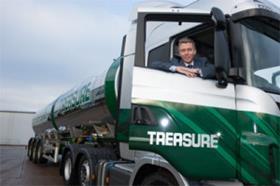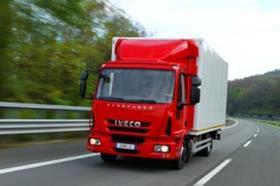Throughout 2013 the Motortransport.co.uk editorial team has worked hard to bring its loyal readers the very best breaking news in the industry. So, if you will forgive just one indulgence, here are our highlights of the year.
Christopher Walton, Group News Editor: The MT Awards can be loud, noisy and a whirlwind of activity. But I was privileged enough to spend a good chunk of the evening chatting with an industry legend: John Harvey. Now at private equity firm Keswick Enterprises Harvey’s story is that is British logistics itself. He led an MBO at Tibbet & Britten in 1984 when the firm was a £30m a year business. Twenty years later he sold it to Exel when it was doing £2.3bn a year. We talked about the failure of big British logistics concerns since then, the difficulties of delivering to Vietnam and his interests in Romania. A personable and funny chap, he seemed happy to give his time to a young(ish) hack like me. A true gentleman.

Chris Druce, Deputy Group News Editor: In March we placed Motortransport.co.uk behind a registration wall and introduced The Hub. It’s where we get to explore themes, stories and add a bit more opinion and detail. If you haven’t already, I suggest you check it out. I’ve really enjoyed having another way to communicate some of the big stories and topics of the year (such as cycling), so I’m including writing for, it unorthodoxly, as it one of my highlights.
Indeed, breaking news on the Motortransport.co.uk website has been another exciting, fast paced experience this year and another highlight. There was South West Delivery Services being bought by Kay Transport, the meteoric rise of Premier Transport, and the sad demise of haulier Palletline Logistics (Midlands) to name just a few..

Ashleigh Wight, Reporter: One of my favourite moments of this year was when I travelled to Grantham in Lincolnshire to see MT Livery of the Year award winner Treasure Transport and the star of the show, its beer tanker livery.
I’d like to say that the tanker had been specially cleaned for my visit, but as the company takes such pride in ensuring that its fleet is well-presented and clean, the tanker would look its best whether MT came to visit or not.
The winning design featured a bespoke tanker constructed and painted to look like two giant beer cans lying side by side, with a stainless steel finish so shiny that you can see your reflection in it. Seeing the tanker for myself on a sunny August day made it look even more impressive than in print, and made the hundreds of pints it has the capacity to hold seem even more refreshing.

David Wilcox, Technical Editor: Iveco is understandably proud of its sister company, FPT Industrial. This is the powertrain development company, responsible for the development and manufacture of a portfolio of diesel engines ranging in sept volume from 2.2 litres to 20 litres.
FPT has half a dozen technical centres but the jewel in the crown is the one in Arbon, Switzerland, responsible for the advanced technologies needed for today’s truck engines. Nestling on shore of Lake Constance, the picturesque and sleepy town of Arbon seems an unlikely spot for high-tech engine development. But maybe not: about 20km away on the opposite shore of the lake is Friedrichshafen, the German town that is home to both ZF and MTU, the latter known for its large industrial diesel engines. What better way to attract the cream of Europe’s engine designers than an enviable lifestyle in an idyllic location?
On a warm July morning I am in Arbon to talk to FPT about Iveco’s Euro-6 strategy. Dubbed Hi-eSCR, this is the rejection of EGR, instead relying solely on SCR to take out at least 95% of the NOx in the exhaust. The architects of this strategy are in Arbon, among the 200 or so engineers who work here. By European standards that is a tight-knit team, but its track record is impressive. This is the birthplace of the Cursor engine, for example.
With all its rivals using a combination of EGR and SCR to cut NOx at Euro-6, Iveco’s decision to use only SCR looked either bold and innovative or risky and misjudged. When Scania subsequently announced it too would be offering some SCR-only Euro-6 engines this seemed to confirm that Iveco was onto something.
A fascinating morning spent discussing the ins and outs of with Dirk Bergmann, general manager of FPT in Arbon, convinced me that the SCR-only approach has much to commend it. Crucially, the absence of EGR means that combustion is optimised for a clean and efficient burn, improving fuel consumption and minimising particulates. The easy-going and amiable Bergmann exudes a quiet confidence about Hi-eSCR technology and his engineers who developed it. “We have people here who say ‘Let’s find where the limits are?’ he says. “They allowed us to push the limits for SCR efficiency.”
That efficiency is dependent on AdBlue dosing working more efficiently than current SCR systems at low exhaust gas temperatures. The secret, says Iveco, lies in the use of patented modelling algorithms that give more precise, proactive control of AdBlue dosing than the competition’s. So, after touring the usual engine test-cells Bergmann takes me to the ‘urea room,’ a laboratory devoted to perfecting the science of AdBlue injection. And because the real challenge of SCR for Euro-6 is making it work effectively at low exhaust temperatures, I am not surprised to see a large, glass-fronted, laboratory fridge standing in the corner of the room, with a temperature read-out showing 4.5 degrees. That would be used for pre-conditioning SCR system components for low-temperature testing, I think to myself. Indeed, I can see that there is a component inside undergoing this preparation – a case of beer. Bergmann joins in the laughter and we go for lunch. Enough AdBlue, time for a glass of red.














